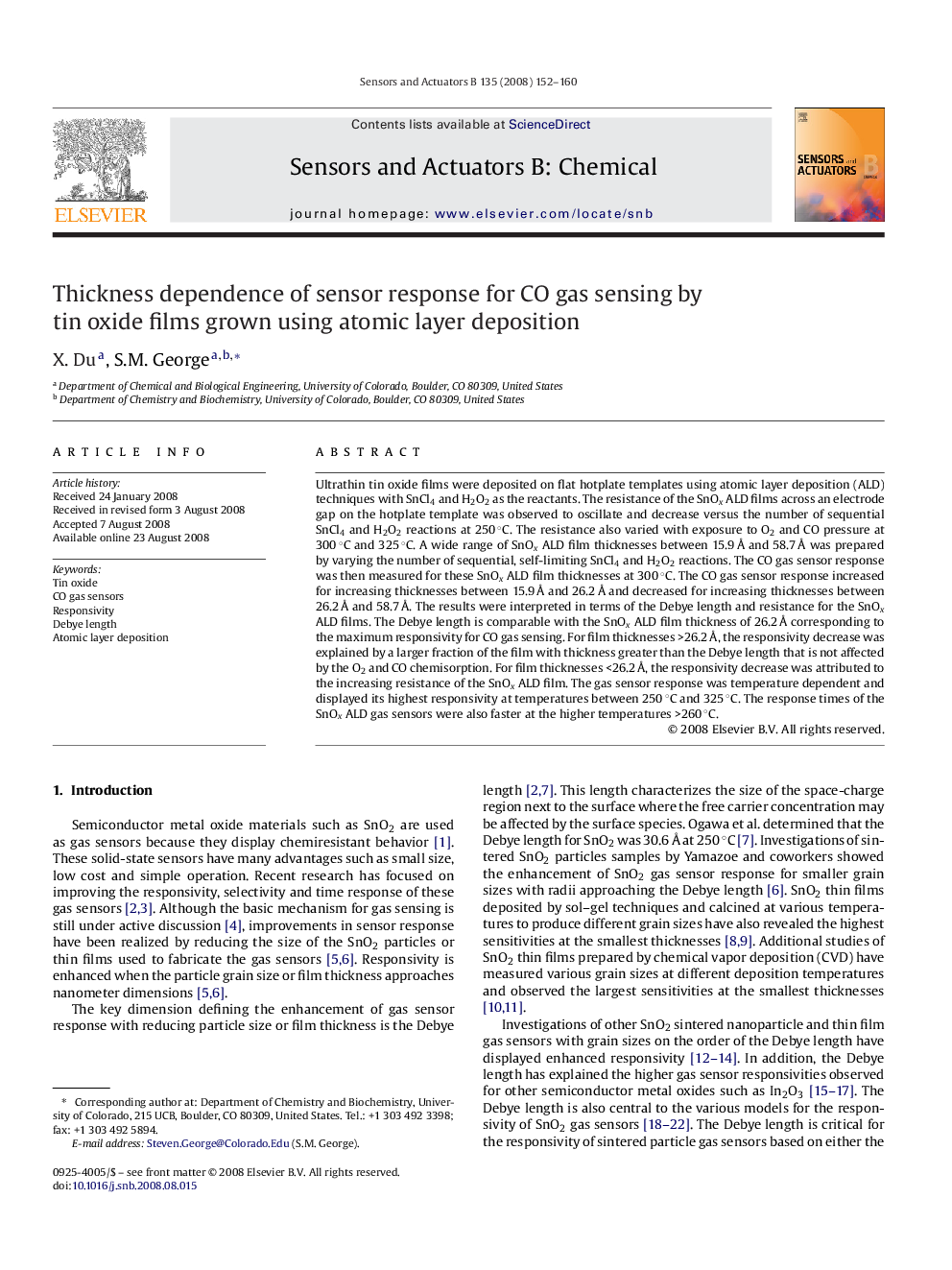| Article ID | Journal | Published Year | Pages | File Type |
|---|---|---|---|---|
| 741140 | Sensors and Actuators B: Chemical | 2008 | 9 Pages |
Ultrathin tin oxide films were deposited on flat hotplate templates using atomic layer deposition (ALD) techniques with SnCl4 and H2O2 as the reactants. The resistance of the SnOx ALD films across an electrode gap on the hotplate template was observed to oscillate and decrease versus the number of sequential SnCl4 and H2O2 reactions at 250 °C. The resistance also varied with exposure to O2 and CO pressure at 300 °C and 325 °C. A wide range of SnOx ALD film thicknesses between 15.9 Å and 58.7 Å was prepared by varying the number of sequential, self-limiting SnCl4 and H2O2 reactions. The CO gas sensor response was then measured for these SnOx ALD film thicknesses at 300 °C. The CO gas sensor response increased for increasing thicknesses between 15.9 Å and 26.2 Å and decreased for increasing thicknesses between 26.2 Å and 58.7 Å. The results were interpreted in terms of the Debye length and resistance for the SnOx ALD films. The Debye length is comparable with the SnOx ALD film thickness of 26.2 Å corresponding to the maximum responsivity for CO gas sensing. For film thicknesses >26.2 Å, the responsivity decrease was explained by a larger fraction of the film with thickness greater than the Debye length that is not affected by the O2 and CO chemisorption. For film thicknesses <26.2 Å, the responsivity decrease was attributed to the increasing resistance of the SnOx ALD film. The gas sensor response was temperature dependent and displayed its highest responsivity at temperatures between 250 °C and 325 °C. The response times of the SnOx ALD gas sensors were also faster at the higher temperatures >260 °C.
